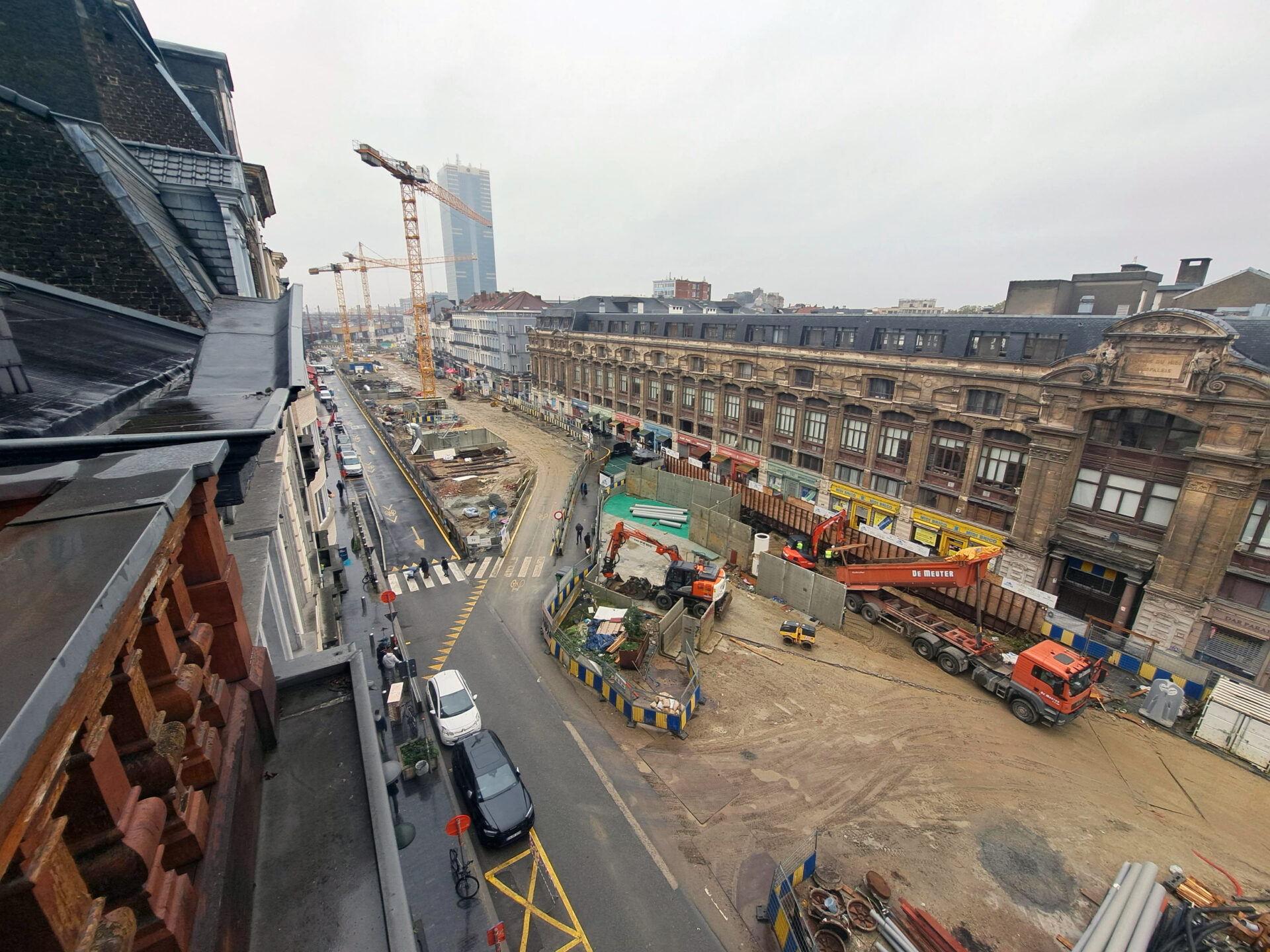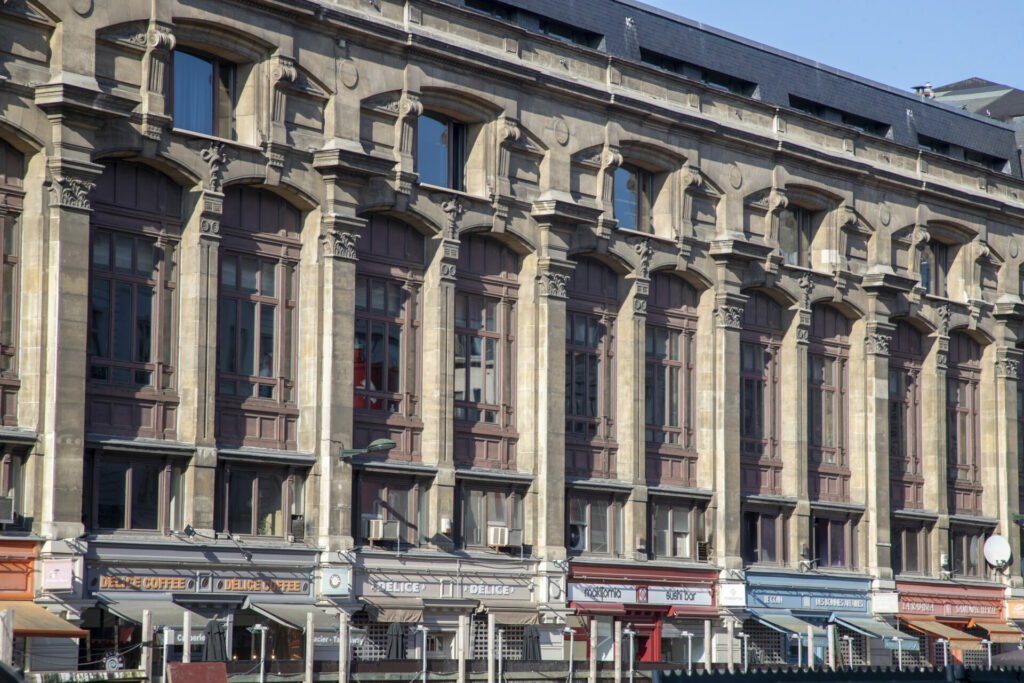Brussels' embattled Palais du Midi is among the most endangered heritage sites in Europe, according to a new civil society campaign – which issued a warning against the "gentrification" of a "migrant neighbourhood."
The iconic Palais du Midi, designed by Wynand Janssens and opened in 1880, is wedged between Brussels-Midi station and the multicultural district of Stalingrad-Lemonnier. Since 2021, it has been at the centre of a large dispute over the construction of the new Metro 3 line, which is due to run underneath it.
Faced with technical problems which halted construction work, the Brussels-Capital Region decided that it would need to dismantle the interior of the building, leaving only its facades, to facilitate the construction of the Metro. Works are due to begin in mid-2025.
After local activists decided to seek international help, the building was announced on Tuesday to have been shortlisted for the Most Endangered Programme, particularly because of the growing concern over the social and cultural effects of the Brussels Region's plans.
The programme lists heritage sites "threatened by demolition, unsuitable development, the devastating impact of natural disasters, neglect or lack of funding." It is run by Europa Nostra, the European Voice of Civil Society Committed to Cultural and Natural Heritage, and the European Investment Bank (EIB) Institute.
The building was submitted by the Brussels urban activist group ARAU, which since 1977 has provided expert knowledge to defend heritage buildings in Brussels.

Works around the Palais du Midi at the end of October 2023. Credit: Belga/ Timon Rambler
"Europa Nostra's selection of the Palais du Midi shows international recognition of its value, a value that is too often underestimated, if not totally denied, by Brussels politicians," ARAU said in reaction to the announcement. In this case, ARAU is advocating for an alternative tramway service instead of the Metro line 3.
Under its current plans to demolish the interior, local residents' social and cultural hubs found inside the Palais du Midi will all be lost. The interior hosts many public functions and collective facilities, including a high school, a sports complex with several gymnasiums, and around 30 shops.
"Gutting the Palais du Midi would have severe negative consequences, not only for the architectural heritage itself but also for the urban and social fabric and vitality of the surrounding migrant neighbourhood," the Europa Nostra expert panel said. "It would further the gentrification of central Brussels."
Saving a neighbourhood
Another aspect is the noise nuisance to the residents of the neighbourhood, who find themselves in the middle of a renovation project, which is the equivalent of demolishing two entire blocks in the densest parts of Brussels' Pentagon/Vijfhoek.

Palais du Midi is at the centre of the redevelopment plans of Avenue de Stalingard. Credit: Cabinet Ans Persoons
Furthermore, these works would be added to the complete redevelopment of the Avenue de Stalingrad, which is already underway. The building works are expected to cause extremely serious environmental damage through noise, dust, vibrations, etc.
"As well as saving 'bricks', it is above all the many activities that the Palais du Midi houses that are at the heart of the battle waged by residents and associations," ARAU said. "These activities are essential to the survival of the Stalingrad-Lemonnier district, which has been undergoing destructive building work for over four years."
The 7 Most Endangered Programme will announce the final shortlist in April 2024.

